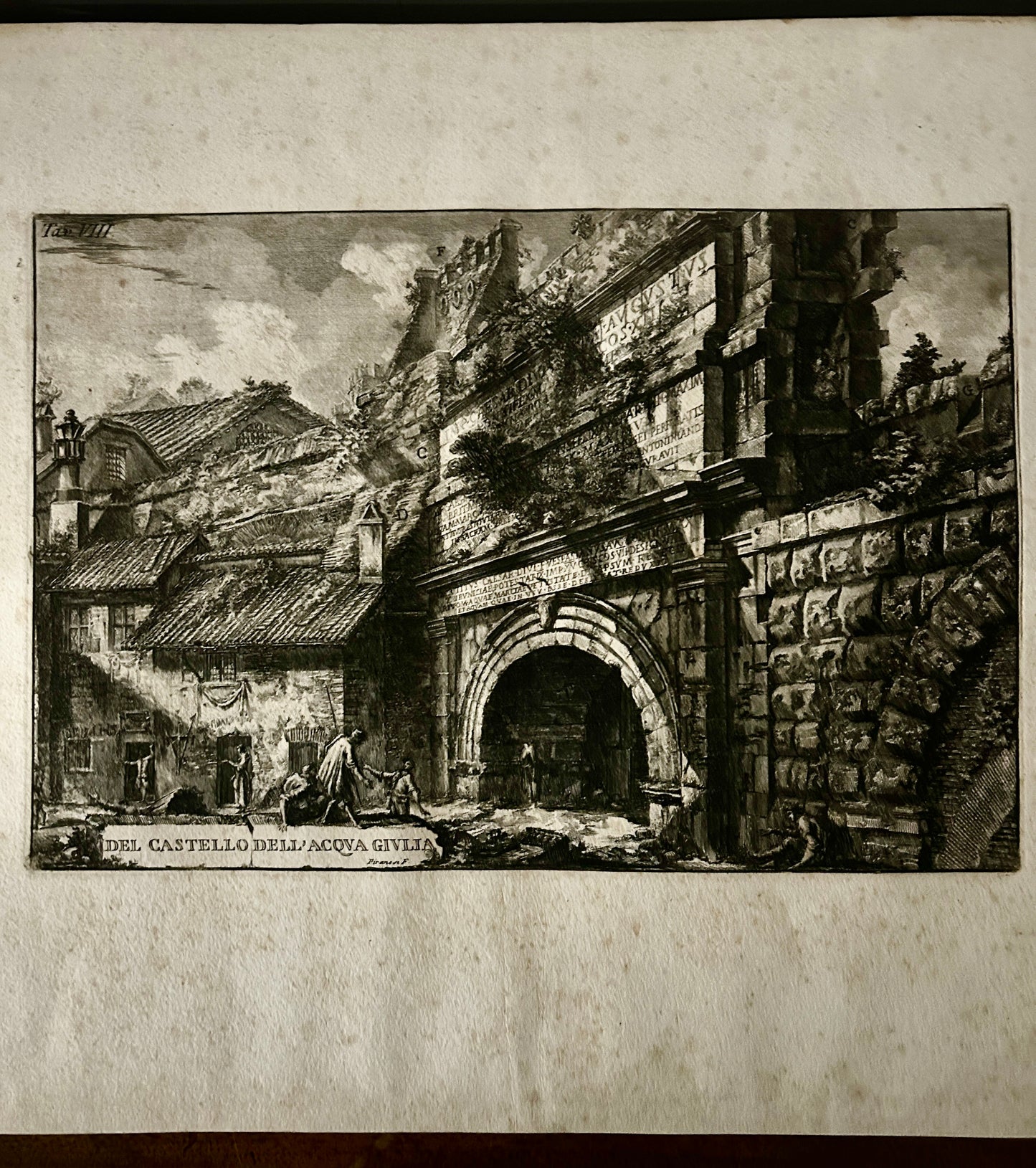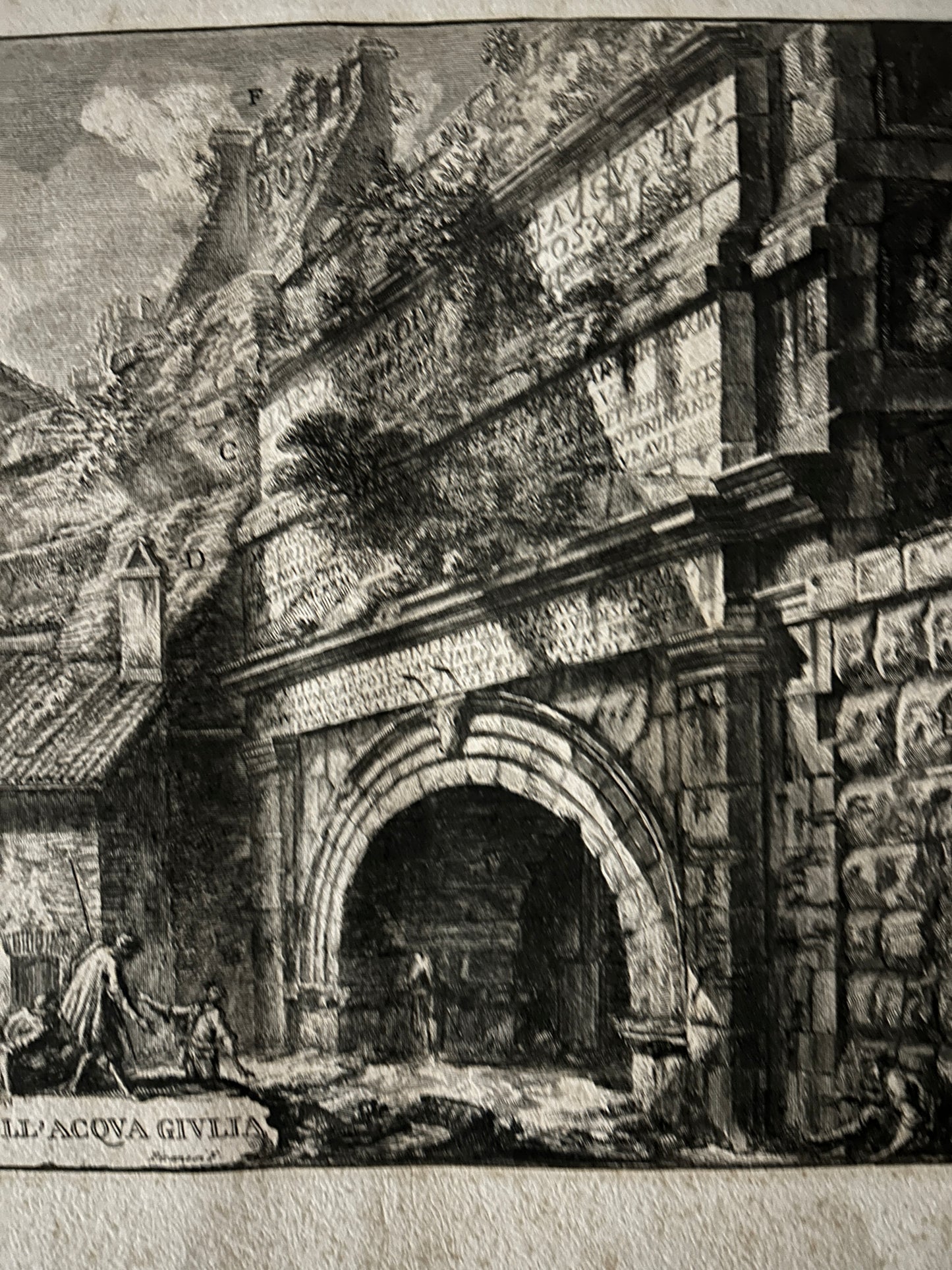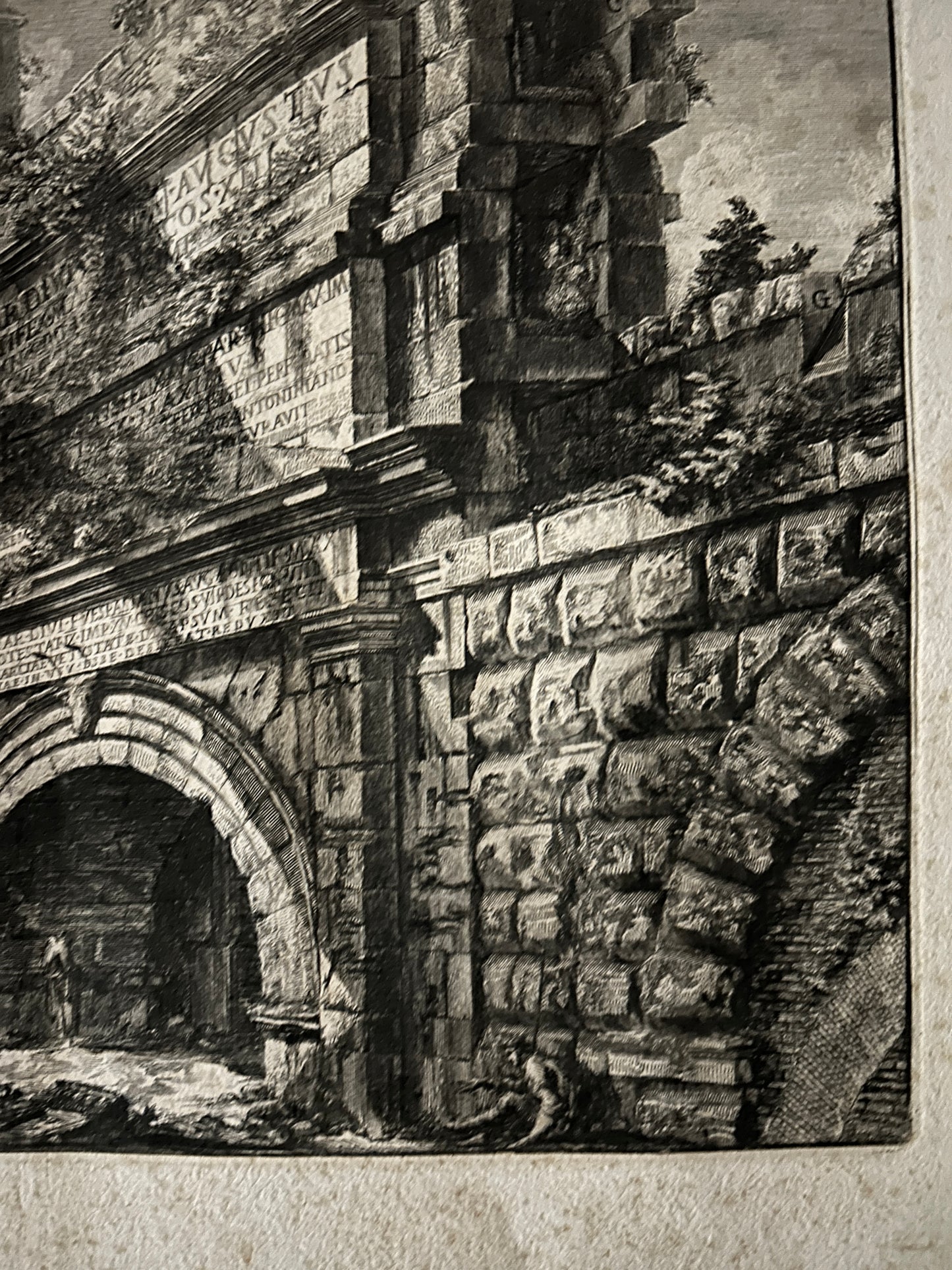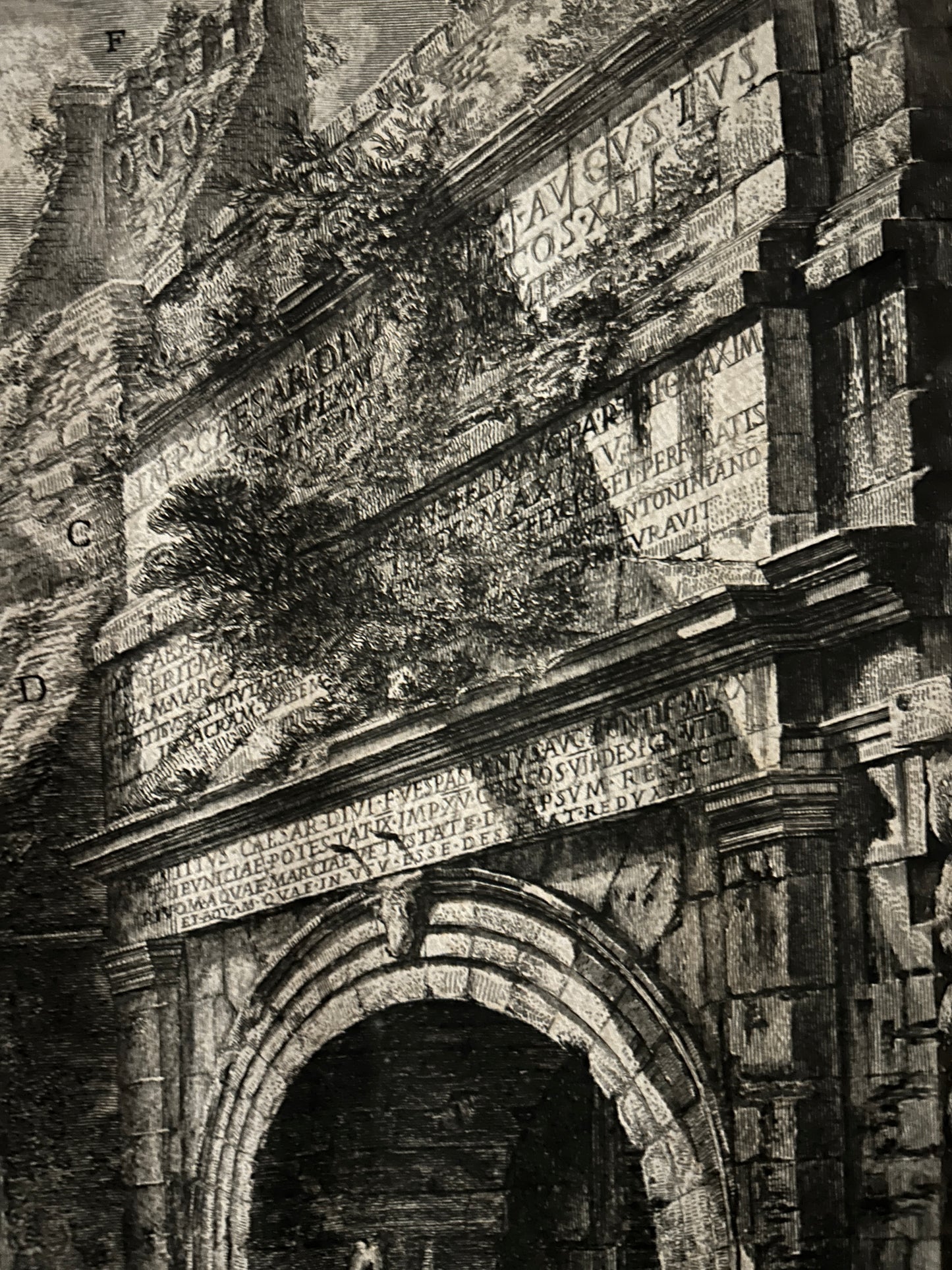Etching by Giovanni Battista Piranesi
Regular price
£200.00 GBP
Regular price
Sale price
£200.00 GBP
Unit price
per
Tax included.
Couldn't load pickup availability
Etching by Giovanni Battista Piranesi
Produced between 1806-1833
Title: Del Castello dell'acqua Giulia
Etching on paper
40 x 49 cm
This print was published between 1806-1833. Giovanni Battista Piranesi was one of the leading figures in the development of the neoclassical style in the late 18th Century. As architect, archaeologist, artist, designer, collector, and antiquities dealer, he produced a series of etchings and engravings depicting the glories of ancient Rome. These fine prints served as source material for other architects and designers. He was born in Venice on the 4th October 1720. The son of a stone-mason, he was educated as an architect under his maternal uncle Matto Lucchesi and under Carlo Zucchi. In 1740 Piranesi left Venice for Rome, there he studied etching under Giuseppe Vasi. He appears to have had little success in these early years in Rome and as his father was unable to continue his allowance returned to Venice in 1744. He was soon, however, encouraged to return to Rome by Giuseppe Wagner, a successful engraver and publisher of Venice. This time he achieved success, and a constant series of works, illustrating architecture and antiquities, issued from his studio until his death in 1778. His output in etched plates is enormous (about 1000 numbers in all). While he achieved a work of magnitude in pictorial records of Roman monuments of antiquity and of the Renaissance, and gave immense archæological, antiquarian, and topographical value to this work, the artistic quality always predominates. He was fond of peopling his ruins with Callot-like figures, and "like Callot makes great use of the swelling line" (Hind). He had two sons and a daughter, all of whom helped him in his work and after his death carried on his publications in Rome and Paris. They were Francesco (born 1748 or 1756; died 1810), Pietro (who lived till after 1807) and Laura (born 1750). His position in Rome and in Europe after 1760 was a prominent one. He was well-known figure to the wealthy English visitors in Rome and was elected a Fellow of the Society of Antiquaries in 1757. Most of his life was passed in Rome, etching, writing, publishing, and directing a workshop










